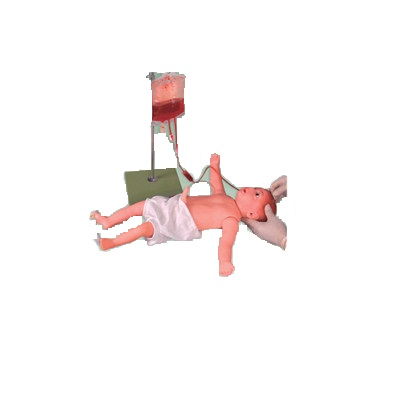Homepageпјҡ NEWS >> Protecting newborns and teaching accurately - the outstanding charm of advanced infant whole body venipuncture model
In the world of medicine, every birth of life is a miracle, and protecting the health and safety of these newborns is the sacred mission of each of our medical staff. Infant systemic venipuncture is a common clinical medical operation, and its accuracy and safety are directly related to the treatment effect and life safety of infants. The emergence of advanced infant systemic venipuncture models provides medical staff with an efficient and safe practice platform to protect the health of newborns.

The advanced infant whole-body venipuncture model, with its highly simulated and accurately restored design of the infant's physiological characteristics, allows medical staff to deeply feel the subtle changes in the infant's blood vessels during simulated operations. The model's skin texture and blood vessel distribution are very similar to those of a real baby, and even the baby's breathing, heartbeat and other vital signs have been accurately simulated. This high degree of simulation not only makes medical staff more comfortable during the operation, but also greatly improves their operational confidence and skill level.
In addition, the advanced infant systemic venipuncture model also has a variety of practical functions. It can simulate various complex puncture scenarios according to different training needs, such as low blood volume, high blood volume and other special situations. Through repeated practice, medical staff can master various puncture techniques and improve their ability to deal with various emergencies. At the same time, the model is also equipped with an intelligent evaluation system that can record the operation process of medical staff in real time and provide detailed feedback and suggestions to help them continuously improve and enhance their skills.
Advanced infant systemic venipuncture models have become indispensable teaching tools in medical schools and hospitals. It can not only be used for daily training of medical staff, but also can be used as a practical teaching platform for medical students. Through simulated operations, students can intuitively understand the process and precautions of systemic venipuncture, and deepen their understanding and mastery of relevant knowledge. This practical teaching method not only improves students' interest in learning, but also improves their practical ability.
More importantly, the application of advanced infant systemic venipuncture models has greatly improved the safety and accuracy of medical operations. In actual operation, because the baby's blood vessels are small and fragile, it is difficult to puncture, and a little carelessness may cause serious consequences. By practicing repeatedly on the model, medical staff can master puncture skills, reduce errors and errors in actual operations, and provide safer and more efficient medical services to children.
Going forward, advanced infant systemic venipuncture models will continue to play an important role in medical education and clinical practice. With the continuous advancement of medical technology and the continuous development of medical education, we believe that this model will continue to be upgraded and improved to provide more comprehensive and efficient training services for medical staff and protect the health of newborns.
In short, the advanced infant systemic venipuncture model has brought revolutionary changes to medical education and clinical practice with its highly simulated, practical and convenient features. It is not only a powerful assistant for medical staff to improve their skills, but also an important tool for medical schools to improve teaching quality. Let us look forward to this model playing a greater role in the future and contributing more to protecting the health of newborns.